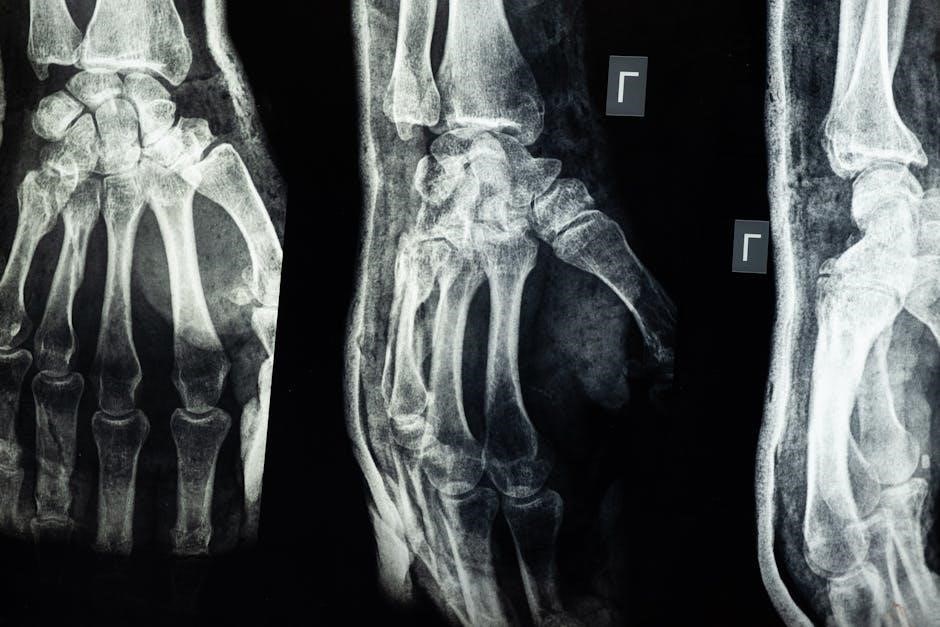CCNA Wireless 200-355 Exam Overview
The Cisco CCNA Wireless 200-355 exam, also known as Implementing Cisco Wireless Network Fundamentals (WIFUND), assesses a candidate’s knowledge of wireless networking. This certification is designed for IT professionals who aim to enhance their expertise in wireless technologies and networks, and it also helps prepare the candidates for the real world work scenarios.
Exam Code and Title
The Cisco CCNA Wireless certification exam is identified by the specific code 200-355. This code is crucial for registration and preparation, ensuring that candidates focus on the correct study materials. The official title of this exam is “Implementing Cisco Wireless Network Fundamentals,” often abbreviated as WIFUND. This title clearly outlines the exam’s scope, which centers on the essential aspects of wireless network deployment and management within Cisco environments. Understanding both the exam code and title is the first step for any candidate to prepare for the certification. This ensures that all study efforts are directed to the correct areas. The exam code and title together provide a clear and concise definition of the certification and its focus on fundamental wireless networking concepts.

200-355 Exam Objectives
The 200-355 exam objectives cover crucial areas such as RF fundamentals, 802.11 technology, network implementation, client connectivity, troubleshooting, and site surveys, encompassing all essential topics for the CCNA Wireless certification.
Radio Frequency Fundamentals
The Radio Frequency (RF) fundamentals section of the CCNA Wireless 200-355 exam delves into the core concepts of wireless communication. This includes understanding signal propagation, which covers how radio waves travel through different environments and how they are affected by obstacles. Key concepts are signal strength, measured in dBm, and how it diminishes with distance. Candidates should grasp the impact of interference and how it affects signal quality and data transmission. Other aspects include modulation techniques, which are the methods used to encode digital data onto radio waves, and the various frequency bands utilized in wireless networks, each having unique characteristics. It is also important to know about channel selection, which involves choosing the right frequency to avoid interference, and also about antenna types and their radiation patterns, which greatly influence coverage and performance, and finally the concepts of gain and loss that affect signal quality. This knowledge is essential for effective wireless network design and troubleshooting.

802.11 Technology Fundamentals
The 802.11 technology fundamentals section of the CCNA Wireless 200-355 exam explores the standards that govern wireless local area networks (WLANs). This includes an in-depth look at the different 802.11 amendments such as 802.11a, 802.11b, 802.11g, 802.11n, 802.11ac, and 802.11ax, and their respective characteristics, data rates, and operating frequencies. Candidates must understand the various Medium Access Control (MAC) layer protocols, especially CSMA/CA (Carrier Sense Multiple Access with Collision Avoidance), and how they manage access to the wireless medium. It is crucial to have the knowledge of frame types used in 802.11, such as management frames, control frames, and data frames, which are important for wireless network communication. Another aspect is understanding the concepts of service sets, including BSS (Basic Service Set) and ESS (Extended Service Set), and how they form wireless networks. Security protocols such as WEP, WPA, and WPA2, are also very important for securing wireless networks. This section is vital for designing, implementing, and managing modern wireless networks.
Implementing and Operating a Wireless Network
Implementing and operating a wireless network is a critical domain covered in the CCNA Wireless 200-355 exam, focusing on the practical aspects of deploying and managing wireless infrastructure. This section requires knowledge of configuring wireless access points (APs) for various modes, including autonomous and controller-based deployments. Candidates should understand how to set up wireless LAN controllers (WLCs) and how to associate APs with them. Key topics include configuring security settings on APs, such as authentication methods and encryption protocols. Furthermore, the exam covers the configuration of VLANs, QoS (Quality of Service) settings, and other network parameters to ensure optimal performance. Monitoring and maintaining the wireless network is also a major focus, including using tools to check network performance, identify issues, and implement necessary adjustments. This section is crucial for those who will be involved in the day-to-day management of wireless networks in real-world scenarios.
Client Connectivity Configuration
Client connectivity configuration is a vital aspect of the CCNA Wireless 200-355 exam, focusing on how wireless clients connect to the network. This section includes understanding various client authentication methods, such as WPA2-Personal, WPA2-Enterprise, and open authentication. Candidates should know how to configure client devices to connect to wireless networks and manage profiles on different operating systems. The configuration also involves understanding the settings of wireless network adapters, including frequencies, channels, and security protocols. It is essential to grasp the concept of service set identifiers (SSIDs) and how clients discover and connect to them. This domain emphasizes the practical aspects of setting up wireless clients and ensuring they can securely access the network. Proper configuration is crucial for maintaining a smooth and reliable user experience, and for ensuring that the wireless network is properly secured from outside threats. This knowledge is key for real-world network administration.
Client Connectivity Troubleshooting
Client connectivity troubleshooting forms a crucial part of the CCNA Wireless 200-355 exam, focusing on diagnosing and resolving issues that prevent clients from connecting to wireless networks. This section covers various problems such as incorrect password entries, signal interference, driver issues, and incorrect network configurations. Candidates should understand how to use tools and techniques to pinpoint the root cause of connectivity issues. This includes examining client logs, utilizing network analyzers, and testing different authentication methods. The troubleshooting process involves identifying whether the problem lies with the client, the access point, or the network infrastructure. It also includes understanding common error messages and how to interpret them to solve problems. Effective troubleshooting requires a systematic approach and a solid understanding of wireless protocols and technologies. Mastery of these skills is essential for maintaining a functional and dependable wireless network, this is something that is very important for the real world.
Site Survey Process
The site survey process is a critical component covered in the CCNA Wireless 200-355 exam, focusing on the essential steps needed to plan and implement a robust wireless network. This involves the methodical assessment of a physical location to determine optimal placement of access points for best coverage and performance. Candidates should understand how to evaluate environmental factors like building materials, interference sources, and user density to ensure network reliability. The process includes using specialized tools to measure signal strength, identify areas with poor coverage, and avoid signal overlap. A thorough site survey helps minimize potential problems that may arise after deployment, such as dead spots or connectivity issues. This also includes understanding how to document site survey findings properly, allowing for efficient and accurate wireless network implementation. Proficiency in site surveys is crucial for creating an efficient and reliable wireless infrastructure and it’s a key part of the exam.

Study Resources for 200-355
Effective preparation for the 200-355 exam involves utilizing diverse study resources. This includes official guides, practice exams, and online materials, which are very important for success.
Official Cert Guide
The CCNA Wireless 200-355 Official Cert Guide is a crucial resource for exam preparation, offering a structured approach to mastering the required concepts. This guide employs proven techniques and series elements to facilitate effective learning. Each chapter begins with “Do I Know This Already?” quizzes, which help you assess your existing knowledge and determine where to focus your study efforts. The guide provides comprehensive coverage of all exam topics, ensuring you have a solid understanding of the material. It is often recommended to be used in conjunction with the exam blueprint to maximize learning effectiveness. Despite some claims that it may not be sufficient on its own, the Official Cert Guide remains a primary resource for many candidates. It is designed to present information in an organized manner, making it easier for students to grasp the essential topics. It is a good starting point for anyone looking to pass the 200-355 exam and gain a strong foundation in wireless technologies. The book can be used to review the key topics and is often recommended to be used in conjunction with other study materials.
Practice Exams and Dumps
Practice exams and dumps play a significant role in preparing for the CCNA Wireless 200-355 certification. These resources offer candidates a chance to familiarize themselves with the format and types of questions they will encounter on the actual exam. Many sources provide practice questions and answers, allowing candidates to gauge their readiness and identify areas that need improvement. The use of premium dumps is frequently mentioned, with some candidates claiming they are highly valid and helpful for passing the exam. However, it is important to approach these resources with caution, as not all dumps are reliable or accurate. It is best to focus on understanding the underlying concepts rather than solely relying on memorizing answers. Practice tests should be used to complement the official study materials and to test your knowledge in a timed environment. There are varied opinions on the effectiveness of using dumps, but many candidates find them helpful to prepare for the final test. Using practice tests can enhance your skills and prepare you for the real exam environment.
Free Online Practice Tests
Numerous websites offer free online practice tests for the CCNA Wireless 200-355 exam, providing a valuable resource for candidates seeking to assess their knowledge and preparedness. These free tests often cover a range of topics, including radio frequency fundamentals, 802.11 technology, and wireless network implementation. They allow candidates to get a feel for the exam format without any financial commitment, and can help in identifying areas where additional study is needed. Many of these free tests also offer explanations for correct answers, which can enhance understanding of the concepts. While these practice tests are very useful, candidates should be aware of the potential differences in quality and accuracy when compared to premium resources. It is a good idea to use various sources to ensure a well-rounded preparation for the actual exam. Using free practice tests can be a valuable addition to your study plan. Combining these with other study methods can be very effective.

Exam Preparation Tips
To effectively prepare for the CCNA Wireless 200-355 exam, candidates should focus on reviewing key topics, utilizing practice questions, and considering premium dumps. A structured approach is crucial.
Review Key Topics
A thorough review of key topics is paramount for success in the CCNA Wireless 200-355 exam. Focus on areas such as Radio Frequency (RF) fundamentals, which include understanding signal propagation, antenna types, and power levels. Delve into 802.11 technology fundamentals, covering various standards, protocols, and frame types. Grasp the concepts of implementing and operating a wireless network, including access point configuration and wireless LAN controller functions. Client connectivity configurations must be understood, as should troubleshooting common connectivity issues and the site survey process. Ensure a deep understanding of these fundamental areas, as they form the core knowledge required for the exam. Furthermore, review the blueprint of the exam to understand the specific subtopics under each domain. Pay extra attention to topics that you find challenging. Consistent and focused study on these key areas will solidify your understanding and boost your confidence.
Use Premium Dumps
Utilizing premium dumps can be a valuable strategy in your preparation for the CCNA Wireless 200-355 exam, but it’s essential to approach this resource with caution and a critical eye. Premium dumps, typically in the form of PDF files or VCE practice exams, often contain questions that are similar to what you might encounter on the actual exam. They can be particularly useful for familiarizing yourself with the question format and identifying areas where you need further study. However, relying solely on dumps without understanding the underlying concepts is not advisable. Instead, use premium dumps to supplement your studies, focusing on why each answer is correct or incorrect, rather than just memorizing answers. Ensure the dumps are up-to-date and are from a reputable source, as some dumps may contain inaccurate or outdated information. Use them as a practice tool, not as a shortcut to passing the exam. Remember that a thorough understanding of the concepts is key, not merely memorization.
Utilize Practice Questions
Incorporating practice questions into your study routine is a critical component of preparing for the CCNA Wireless 200-355 exam. These questions serve as a diagnostic tool, helping you gauge your understanding of the various topics covered in the exam. By working through a variety of practice questions, you can identify your strengths and weaknesses, allowing you to focus your study efforts more effectively. Practice questions also expose you to different question formats, which can help improve your test-taking skills and reduce anxiety on the actual exam day. Furthermore, reviewing the answers and explanations for practice questions deepens your understanding of the material. You should strive to understand the “why” behind each correct answer, rather than just memorizing the solution. This approach will lead to a more robust understanding of the subject matter and increase your chances of success on the exam. Remember to find quality practice questions from reliable sources.



